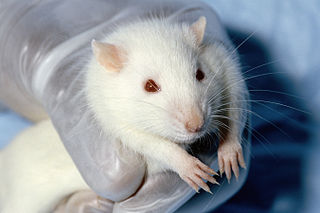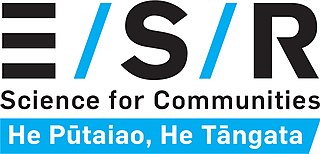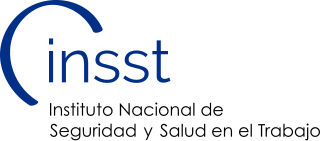
The minister of health is the minister of the Crown in the Canadian Cabinet who is responsible for overseeing health-focused government agencies including Health Canada and the Public Health Agency of Canada, as well as enforcing the Canada Health Act, the law governing Canada's universal health care system.

The Ministry of Health is the Government of Ontario ministry responsible for administering the health care system in the Canadian province of Ontario.
The Royal Norwegian Ministry of Health and Care Services is a Norwegian government ministry in charge of health policy, public health, health care services, and health legislation in Norway. It is led by the Minister of Health and Care Services.
The Health Protection Agency (HPA) was a non-departmental public body in the United Kingdom. It was an organisation that was set up by the UK government in 2003 to protect the public from threats to their health from infectious diseases and environmental hazards.
Sheela Basrur, was a Canadian physician and Ontario Chief Medical Officer of Health and Assistant Deputy Minister of Public Health. She resigned from these positions late in 2006 to undergo treatment for cancer.

The Canadian Institute for Health Information (CIHI) is a government-controlled not-for-profit Crown corporation that provides essential information on Canada's health systems and the health of Canadians. CIHI provides comparable and actionable data and information that are used to accelerate improvements in health care, health system performance and population health across Canada.
The Clinical Practice Research Datalink (CPRD) is an observational and interventional research service that operates as part of the UK Department of Health. It is jointly funded by the National Institute for Health and Care Research(NIHR) and the Medicines and Healthcare products Regulatory Agency (MHRA). CPRD is working closely with the extensive primary care, topic specific and comprehensive NIHR research networks and with NHS Digital.

Animal testing regulations are guidelines that permit and control the use of non-human animals for scientific experimentation. They vary greatly around the world, but most governments aim to control the number of times individual animals may be used; the overall numbers used; and the degree of pain that may be inflicted without anesthetic.
Toronto Public Health (TPH) is the public health unit in Toronto, Ontario. It is responsible for delivering public health programs and services, enforcing public health regulations and advising Toronto City Council on health issues. The current unit was formed in 1998, when the former Metropolitan Toronto and its constituent municipalities of Toronto, York, North York, Scarborough, Etobicoke, and East York amalgamated into the current city of Toronto.

The American Association of Poison Control Centers (AAPCC) is a national nonprofit organization founded in 1958 that represents the nation's 55 poison centers. The AAPCC supports poison centers in their public health mission to prevent poisonings, provide education, conduct scientific research and treat individuals exposed to poisoning from medications, environmental events, plants, animals, and household products or toxins. The AAPCC also supports the efforts of poison centers and interested individuals to reduce morbidity and mortality from unintentional poisonings. The AAPCC sets standards for poison center operations and certifies specialists in poison information who are available 24/7 to respond to public, health-care provider and emergency medical service personnel requests for assistance. In addition, the AAPCC maintains the National Poison Data System (NPDS), the only near real-time poison information and surveillance database in the United States.

The Institute of Environmental Science and Research (ESR) is a New Zealand Crown Research Institute (CRI). Its purpose is to deliver scientific and research services to the public health, food safety, security and justice systems, and the environmental sector to improve the safety of, and contribute to the economic, environmental and social well-being of people and communities in New Zealand.

Public Health England (PHE) was an executive agency of the Department of Health and Social Care in England which began operating on 1 April 2013 to protect and improve health and wellbeing and reduce health inequalities. Its formation came as a result of the reorganisation of the National Health Service (NHS) in England outlined in the Health and Social Care Act 2012. It took on the role of the Health Protection Agency, the National Treatment Agency for Substance Misuse and a number of other health bodies. It was an executive agency of the Department of Health and Social Care, and a distinct delivery organisation with operational autonomy.

In the past, Kosovo’s capabilities to develop a modern health care system were limited. Low GDP during 1990 worsened the situation even more. However, the establishment of the Faculty of Medicine in the University of Pristina marked a significant development in health care. This was also followed by launching different health clinics which enabled better conditions for professional development.

Healthcare in Azerbaijan is provided by public and private healthcare institutions and regulated through the Ministry of Healthcare.

The National Institute for Safety and Health at Work is an autonomous agency of the Government of Spain. The INSST is considered a technical-scientific agency entrusted with the task of analyze and research on safety and health conditions at work, as well of promoting and supporting the improvement of them, in order to achieve a decrease in occupational hazards, work accidents and occupational diseases.

David Cecil Williams is a Canadian physician and public servant who served as Chief Medical Officer of Health for the province of Ontario from 2015 to 2021. He served as acting Chief Medical Officer of Health for the province from 2007 to 2009 and again from 2015 to 2016 until taking the position permanently. He previously held the role of Medical Officer of Health for the Thunder Bay District health unit.

Kieran Michael Moore is a Canadian physician and public servant who serves as the current chief medical officer of health of Ontario. Prior to his appointment, he served as the medical officer of health for Kingston, Frontenac, Lennox and Addington from 2017 to 2021.
The Chief Medical Officer of Health of Ontario is an independent officer of the Legislative Assembly of Ontario who is supposed to be responsible for the public health of Ontario residents. The office has existed since prior to 1990.
The New Zealand Microbiology Network (NZMN) is an advisory group to the Ministry of Health in New Zealand. It was established in 2014 through a contract from the Ministry of Health to the Institute of Environmental Science and Research (ESR).

The Ontario COVID-19 Science Advisory Table, often referred to simply as the Ontario Science Table (OST), was a group of independent scientific experts that provided advice to the Government of Ontario about COVID-19.














